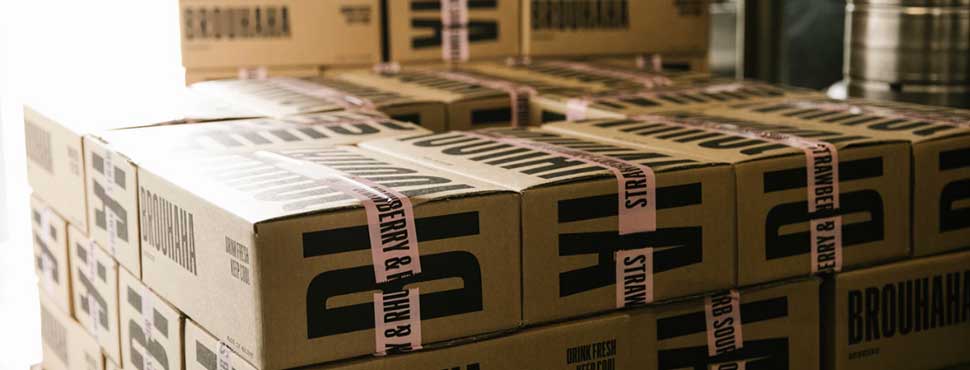parcelLab’s Head of UK and Nordic Clients Conor McGrath surveys the ever-shifting retail landscape, who might be hit hardest by the COVID-19 crisis, and what all brands can do to lower stress levels and maintain loyalty among their customer base.

Now we’re in the thick of self-isolation, social distancing and ‘non-essential’ store shutdowns, retailers with ecommerce capability are already seeing a huge surge in online orders, and even experienced pure-play online retailers like Ocado are struggling to meet the demand. People who don’t often or may have never shopped online are highly likely to start now, and if they find the experience convenient, well-communicated and stress-free, there’s a strong chance it will become a lifetime habit. In short, this crisis could radically speed up the projected changes we have been expecting in the growth of online purchasing.
This is certainly a peak-time for retail, but unlike the seasonal peaks retailers meticulously plan for – making sure relevant stock, staff and marketing are all in place – this one has taken many by surprise, and an ability to adapt quickly is essential to survival.
Firstly, we have to think about what house-bound people are likely to be looking for. Grocery items and healthcare are the most obvious ones, but as these are classed as essential necessities, physical stores selling these items will see fewer restrictions on their day-to-day trading. The challenges for them will be staffing levels and wellness, and production and supply chain issues. We may see the physical layouts of these stores alter, as stock levels are depleted, or as the shopping experience becomes more about the necessity of efficiently grabbing the basics and exiting the store – this is not a time to leave customers traipsing up and down aisles trying to locate things, or to take them on a prolonged journey of discovery. Many supermarkets have been dedicating a time when the elderly, vulnerable and key workers can shop exclusively, which no doubt has also impacted store layouts, as retailers are forced more than ever to consider the accessible shopping experience. This is something we may see alter physical retail stores for the better once the crisis abates.
Interestingly, we are also seeing smaller independent and convenience stores holding their own, as they are close to people’s homes, easy and quick to navigate and less tied into complex stock order agreements with suppliers; they may therefore be able to change up their product offerings with greater agility. As many people frequent smaller stores they had previously eschewed for the large supermarkets, it might be a good time for these retailers to consider becoming collection points for online retailers and delivery services.
So, what else are people buying at this time? Home improvement/DIY products, craft and hobby goods, ‘work from home’ tech, children’s toys… All of these product areas will currently be sought online, and they all lend themselves well to add-on purchases and follow up buys. Ecommerce retailers play a key role in providing shoppers with discovery and inspiration now that they can’t wander down their high street. Retailers should consider using post-purchase communications to suggest related items – another book by the same author, a slightly more challenging craft project – to help inspire their customers. If retailers can also follow initial purchases with a discounting offer on further purchases, the gesture will be hugely appreciated at this financially tricky time, making shoppers feel valued.

As we’re urged to stay at home, many people will be trying activities they don’t usually participate in, either through the necessity of social distancing – cleaning, gardening, cooking, DIY – or to make use of at-home time – learning an instrument, a new artistic craft or game. Shoppers making purchases related to rusty or new skills will appreciate expert advice and help – videos, how-tos, recipe ideas etc – which can all be an added bonus delivered to them through tailored post-purchase communications. This feel-good content helps to build a sense of community, which many will be craving in this anxious time.
We expect the fast fashion industry to be one of the worst-hit by the stay at home directive for several reasons: people don’t need a new outfit for their weekly night out; if money is tight, novelties are non-essential; people forced to stay in surrounded by everything they already own may feel guilty about buying anything else!
The retail industry’s reactionary measures have included many retailers offering discounts to NHS workers – an extension of a scheme some already offered, and something it perhaps seems logical to keep in place for all time. It is a time for brands to step out from their corporate armour and show their more human side.
But what can online retail brands do to make sure they are still providing the ‘human touch’ in a time of social distancing? Based on the latest feedback from the 450 brands we currently work with, we’ve anticipated the main challenges and mitigations that ecommerce will be experiencing, and the main advice we would give retailers is this: reassure and be pro-active on every touchpoint to build confidence and reduce enquiries. If retailers aren’t in a position to produce flashy extras, then focus on solid fundamentals. Reward loyalty. Communicate clearly and sympathetically. Provide regular updates on where their order is, when it will be delivered and by who. Reassure and guide them on how it will be delivered to keep courier and themselves safe. Acknowledge and apologise for any delays or issues. Show you are supporting key workers and the vulnerable as best you can. And if you really don’t have anything appropriate to sell at this time, consider uplifting and inspiring content you can share with your loyal customer-base, and they’re sure to stay with you as business returns to normal.
Originally posted A1Retail Magazine, April 2020

